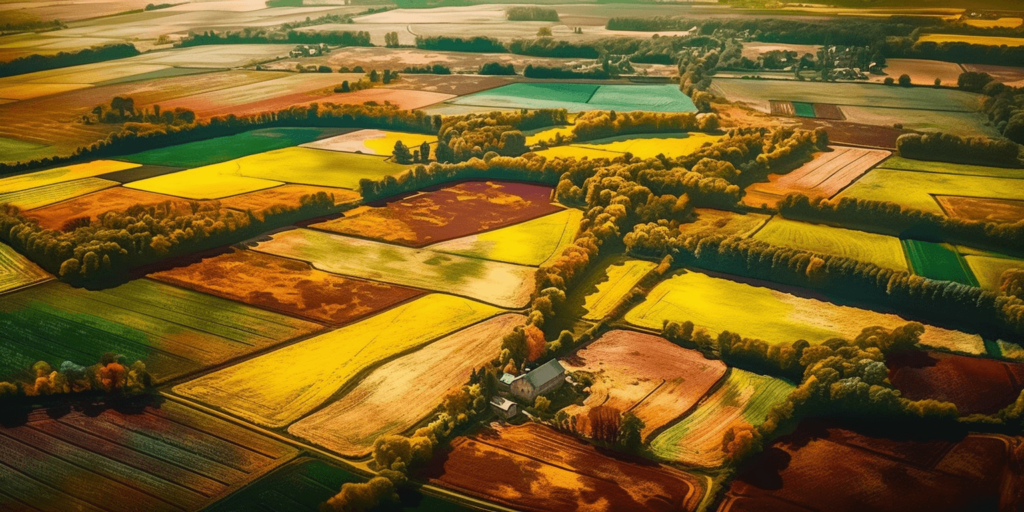Earthquakes are natural disasters that can cause immense destruction, making it crucial to assess their risks in order to save lives and minimize property loss. Technological advancements have given rise to innovative methods that improve our understanding of seismic hazards. LiDAR for Earthquake Hazard Assessment is one such pioneering approach, offering unmatched precision and efficiency in mapping and monitoring earthquake risks. In this comprehensive article, we will explore LiDAR technology, its applications in assessing earthquake risks, advantages, limitations, and notable case studies. We will also discuss LiDAR’s role in measuring ground deformation, fault movements, and its potential in earthquake early warning systems.
Understanding LiDAR Technology
What is LiDAR and How Does It Work?
LiDAR, or Light Detection and Ranging, is a remote sensing technology that uses laser light to measure distances and create detailed, high-resolution three-dimensional representations of the Earth’s surface. A LiDAR system typically consists of a laser, a scanner, a GPS receiver, and an inertial measurement unit (IMU). The laser emits pulses of light, which travel to the Earth’s surface and bounce back to the sensor. The time it takes for the light to travel back and forth is recorded, allowing the system to calculate the distance to the object.
Types of LiDAR Systems
There are two main types of LiDAR systems used in earthquake hazard assessment: airborne and terrestrial LiDAR.
Airborne LiDAR: Mounted on aircraft, airborne LiDAR systems cover large areas quickly and efficiently. They are particularly useful for mapping remote and inaccessible regions. Airborne LiDAR can be further divided into topographic (used for mapping land surfaces) and bathymetric (used for mapping underwater features) systems.
Terrestrial LiDAR: Terrestrial LiDAR systems are ground-based and typically mounted on tripods. They are used to scan smaller areas in greater detail, making them ideal for studying specific sites, such as fault lines or infrastructure elements.
LiDAR Applications in Earthquake Hazards and Risk Assessment
Identifying Faults and Deformation
LiDAR technology is invaluable for detecting and mapping fault lines, which are critical for understanding earthquake risks. By creating high-resolution images of the Earth’s surface, LiDAR allows researchers to identify subtle features indicative of fault movements, such as ground deformation and offset landforms.
Mapping Surface Ruptures and Potential Earthquake Zones
In addition to detecting fault lines, LiDAR can also be used to map surface ruptures caused by earthquakes. By comparing pre- and post-earthquake LiDAR data, scientists can assess the extent and magnitude of surface ruptures, which can provide valuable information for predicting the potential impact of future events.
Evaluating Seismic Hazards and Risks
LiDAR data can be combined with other geospatial information, such as geological and geophysical data, to create comprehensive seismic hazard maps. These maps help researchers identify areas with a high likelihood of earthquake occurrence and estimate the potential consequences, allowing for better risk management and preparedness.
Assessing the Vulnerability of Infrastructure to Earthquakes
LiDAR data can be used to create detailed models of buildings and infrastructure, which can then be analyzed to evaluate their vulnerability to earthquakes. By identifying potential weak points and areas susceptible to damage, engineers can design structures to better withstand seismic events.
LiDAR-based Analysis of Earthquake-induced Landslides
Landslides are common secondary hazards triggered by earthquakes. LiDAR technology can be used to map and monitor areas prone to landslides, providing valuable information for hazard mitigation and early warning systems.
LiDAR Data Integration with GIS for Earthquake Hazard Assessment
LiDAR data can be seamlessly integrated with Geographic Information System (GIS) tools, allowing researchers to visualize, analyze, and interpret complex datasets related to earthquake hazards. This integration enables the creation of powerful models and maps that can inform decision-making for disaster risk reduction and preparedness.
Advantages of Using LiDAR Technology in Earthquake Hazard Mapping
Improved Accuracy and Detail
One of the primary advantages of LiDAR technology is its ability to capture highly accurate and detailed data. LiDAR can reveal subtle surface features that may be difficult or impossible to detect using traditional methods such as aerial photography or satellite imagery. This level of detail is crucial for accurately identifying fault lines, mapping surface ruptures, and assessing the vulnerability of infrastructure.
Rapid Data Collection and Processing
LiDAR technology enables rapid data collection, covering large areas in a relatively short amount of time. Airborne LiDAR systems can survey thousands of square kilometers in a single flight, providing researchers with up-to-date information on changing conditions. Additionally, modern LiDAR data processing techniques have become increasingly efficient, allowing for faster analysis and interpretation of collected data.
Versatility in Diverse Environments
LiDAR systems can be employed in a wide range of environments, from densely forested regions to urban areas. The technology’s ability to penetrate vegetation and capture data from the ground surface makes it particularly useful for studying hidden fault lines and other geological features in areas with dense vegetation cover. In urban settings, LiDAR can be used to assess the vulnerability of infrastructure and identify potential hazards, such as landslides or ground deformation.
Limitations and Challenges in Using LiDAR for Earthquake Hazard Assessment
Technical Limitations
Despite its many advantages, LiDAR technology has some inherent limitations. For instance, LiDAR data can be affected by atmospheric conditions, such as clouds, fog, or heavy rain, which may reduce the accuracy and quality of the data. Furthermore, LiDAR systems have limitations in detecting features beneath water, making it challenging to study underwater fault lines or bathymetric features.
Data Processing Complexities
Processing and analyzing LiDAR data can be complex and require specialized software and expertise. Large datasets may require significant computational resources and time to process, potentially delaying the availability of actionable information. Moreover, integrating LiDAR data with other geospatial information may necessitate the use of advanced GIS techniques, which can be challenging for those without the necessary skills and experience.
Cost Factors
Although the cost of LiDAR technology has decreased in recent years, it can still be relatively expensive, particularly for large-scale projects. The cost of LiDAR data acquisition, processing, and analysis may be prohibitive for some organizations, particularly in developing countries with limited resources. Additionally, the maintenance and operation of LiDAR systems, especially airborne systems, can be costly and require ongoing investments.
Case Studies: Successful LiDAR Applications in Earthquake Hazard Assessment
Haiti Earthquake (2010)
The devastating 2010 earthquake in Haiti caused significant loss of life and widespread damage. In the aftermath, LiDAR technology played a crucial role in understanding the seismic event and its impacts. Airborne LiDAR was used to map surface ruptures, landslides, and other ground deformations, providing valuable insights into the behavior of the fault system responsible for the earthquake. This information helped inform disaster response efforts and contributed to a better understanding of the seismic hazards in the region.
Nepal Earthquake (2015)
Following the catastrophic 2015 earthquake in Nepal, LiDAR technology was employed to assess the damage and guide recovery efforts. Pre- and post-earthquake LiDAR data were compared to identify areas of significant ground deformation and to evaluate the vulnerability of surviving infrastructure. This information proved invaluable for prioritizing rebuilding efforts and mitigating future earthquake risks.
LiDAR for Earthquake Vulnerability Assessment in Urban Areas
In recent years, LiDAR technology has been increasingly used to assess the vulnerability of urban infrastructure to earthquakes. By creating detailed 3D models of buildings and other structures, researchers can analyze their resilience to seismic events and identify potential weak points. This information can inform retrofitting and strengthening efforts, ultimately reducing the potential for damage and loss of life in future earthquakes.
LiDAR Applications in Liquefaction Hazard Mapping
Liquefaction is a significant secondary hazard associated with earthquakes, causing soil to lose its strength and behave like a liquid. LiDAR technology has been used to map areas prone to liquefaction, providing vital information for hazard mitigation and land-use planning. By identifying zones at risk for liquefaction, communities can take appropriate measures to minimize damage and protect lives during earthquakes.
LiDAR Data Analysis for Assessing Seismic Ground Shaking
Seismic ground shaking is a primary cause of damage during earthquakes. Researchers have used LiDAR data to create detailed ground motion models, which can be used to estimate the intensity and extent of ground shaking during seismic events. These models can help inform building codes, emergency response plans, and other risk reduction measures.
LiDAR-based Monitoring of Tectonic Plate Movements
Tectonic plate movements are responsible for the majority of earthquakes worldwide. LiDAR technology has been employed to monitor the motion of tectonic plates, providing valuable information about the forces driving seismic activity. This information can contribute to a better understanding of earthquake risks and inform strategies for reducing the potential impacts of seismic events.
LiDAR Technology for Earthquake Early Warning Systems
LiDAR technology has the potential to play a role in the development of earthquake early warning systems. By continuously monitoring ground deformation and other precursors to seismic activity, LiDAR-based systems could provide valuable information for issuing early warnings, potentially saving lives and reducing property damage during earthquakes.
The Future of LiDAR in Earthquake Risk Management
As LiDAR technology continues to advance, its applications in earthquake risk management are expected to expand and become even more sophisticated. Innovations in LiDAR sensors, data processing techniques, and integration with other geospatial technologies will further enhance our ability to understand and mitigate earthquake hazards.
One area of potential growth is the integration of LiDAR with other remote sensing technologies, such as satellite imagery and radar. Combining these datasets can provide even more comprehensive and accurate assessments of earthquake hazards, enabling more effective risk reduction measures.
Additionally, the use of machine learning and artificial intelligence in LiDAR data analysis has the potential to revolutionize earthquake risk management. Advanced algorithms can automatically identify and analyze features related to seismic hazards, streamlining the data processing workflow and providing more rapid and accurate assessments.
As the technology continues to evolve, LiDAR will undoubtedly play an increasingly significant role in earthquake risk management. Its ability to capture highly detailed and accurate data, combined with ongoing advancements in data processing and analysis techniques, will help researchers and decision-makers better understand, predict, and mitigate the impacts of earthquakes.
Conclusion
In summary, LiDAR technology has proven to be a powerful tool for assessing earthquake risks, helping us better understand and manage seismic hazards. From detecting fault lines and mapping surface ruptures to evaluating the vulnerability of infrastructure and monitoring tectonic plate movements, LiDAR has numerous applications in earthquake hazard assessment and risk reduction. However, despite its many benefits, LiDAR technology faces some limitations and challenges, such as technical constraints, data processing complexities, and cost factors.
To gain a deeper understanding of LiDAR technology and its applications, we encourage you to visit Aerial LiDAR 101: An Introduction to its Applications and Benefits. This resource will provide valuable insights into how LiDAR can be used across various fields, including earthquake hazard assessment.
If you require drone services, such as LiDAR for Earthquake Hazard Assessment, or any other applications, don’t hesitate to reach out to Blue Falcon Aerial. Contact us through our contact page to discuss your needs and how we can assist you in achieving your goals.




